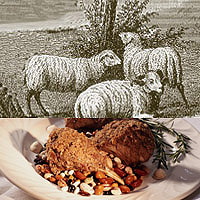Gluten Free
What does following a gluten-free diet mean? That you're embarking on an easy diet with a wide range of health-promoting effects. Instead of dwelling on what you’re giving up, consider that you’re going to enjoy a whole new world of delicious food options to meet your special dietary needs. You’ll be eating seasonally, choosing more fresh fruits and vegetables, focusing on meats, seafood, poultry, legumes, lentils, corn, and rice, and discovering fascinating ancient grains such as quinoa, amaranth, and millet. You’ll be able to eat potatoes, eggs, most cheeses, even chocolate (!)—and enjoy them without guilt because you’ll be taking good care of your body. In fact, you’ll probably end up eating—and feeling—better than ever!
Visit this page for more information about living Gluten Free
---
We carry a large variety of gluten free items, the brands listed below represent just some of the offerings we carry















More Diets
Lamb and Mutton

Varieties
Lamb comes from sheep less than one year of age, and often as young as five to seven months. Special varieties include baby or hot house lamb, which is only six to ten weeks old, and French pré-salé lamb that is raised on salt meadows near the sea. Imported New Zealand lamb, fed on grass rather than grain, has a somewhat stronger taste. Most mutton sold in the United States comes from sheep between one and two years old. It has a more robust taste than lamb.
Lamb and mutton are available in many different cuts: legs, roasts, chops, stew meat, breasts, spareribs, foreshank, and ground lamb. Tender cuts come from the ribs and loin; tougher cuts from the legs and shoulders.
Copyright © 2025 TraceGains, Inc. All rights reserved.
Learn more about TraceGains, the company.
The information presented in the Food Guide is for informational purposes only and was created by a team of US–registered dietitians and food experts. Consult your doctor, practitioner, and/or pharmacist for any health problem and before using any supplements, making dietary changes, or before making any changes in prescribed medications. Information expires December 2025.











